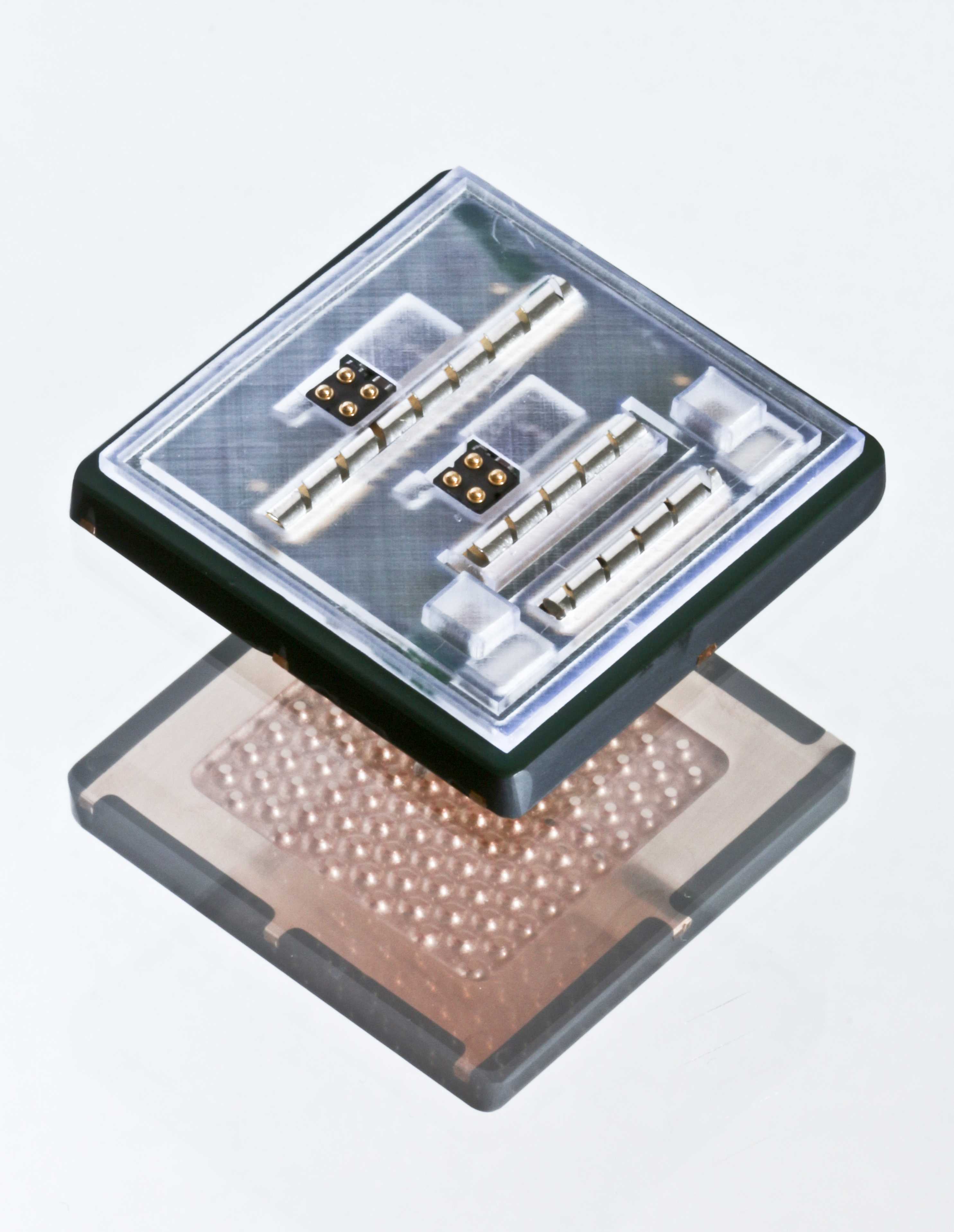More power for the same module size – power electronics at Fraunhofer IZM makes it a reality!
Christoph Marczok is developing a low-inductance power module at Fraunhofer IZM that allows more power than before to be switched with the same module size. For these outstanding research results, the 32-year-old has been honored with the Young Engineer Award. The award was presented in May at PCIM, the international trade fair for power electronics, in Nuremberg.


The new power semiconductors made of silicon carbide and gallium nitride – known as wide-bandgap semiconductors, can switch high voltages and currents much faster than normal semiconductors. Faster switching results in less power loss, so less heat is generated. The result is a smaller module with the same output. This means that volume and weight can be reduced, which in many sectors, such as the automotive industry, reduces costs.
But there is a problem: the design and packaging of the power module create a certain leakage inductance, referred to as commutation cell inductance. When the module is switched off, this manifests itself in the form of overvoltage on the semiconductor. The faster the switching, the greater the current change and thus also the overvoltage. If the overvoltage is too high, the insulation of the power semiconductor is destroyed and, in turn, the power semiconductor itself. This means that fast switching of power semiconductors with conventional packaging has, until now, not been manageable,
because the power module would destroy itself.
At the Fraunhofer Institute for Reliability and Microintegration IZM, this problem has now been solved: together with his project partner Rogers Corporation, Christoph Marczok has developed a playing-card-sized power module that can switch extremely
quick without burning out. Due to a commutation cell inductance of less than two nanohenries and low gate inductance, the total voltage remains far below the dielectric strength of the power semiconductor – and the module remains intact.
Marczok is very satisfied: “The module is full of unique developments, such as the SMD components on the mold module surface. This means that the user only has to provide the power supply and the control pulses. The critical signal paths are already dimensioned and completed. In addition, operationally relevant sensors such as temperature and current sensors can also be integrated into the mold module.” The result is that the user only has to pick up and evaluate the signals – and no longer has to worry about integrating them. The benefits of the module are also measurable: the switch-off losses could be reduced to a mere quarter of those of a conventional module design. At the same time, up to 30 percent more power can be switched with the same power semiconductor. The power module was exhibited from May 7 to 9 at the leading international trade fair for power electronics, PCIM, in Nuremberg. Christoph Marczok also gave a presentation to those present.
Last modified:
 Fraunhofer Institute for Reliability and Microintegration IZM
Fraunhofer Institute for Reliability and Microintegration IZM